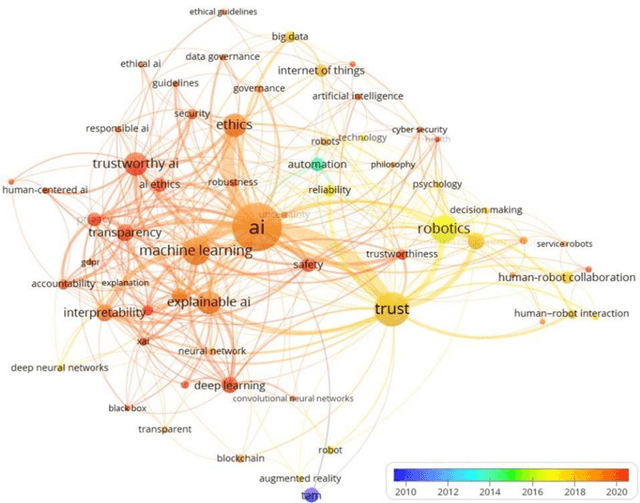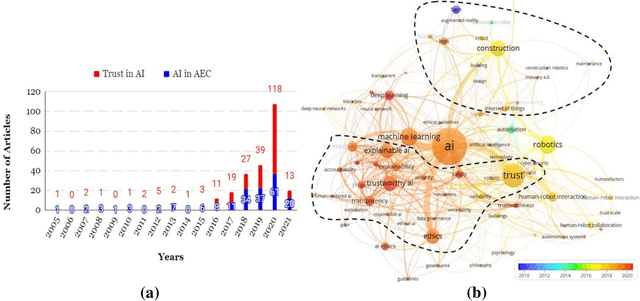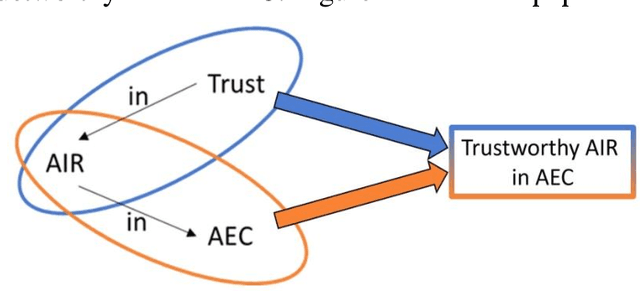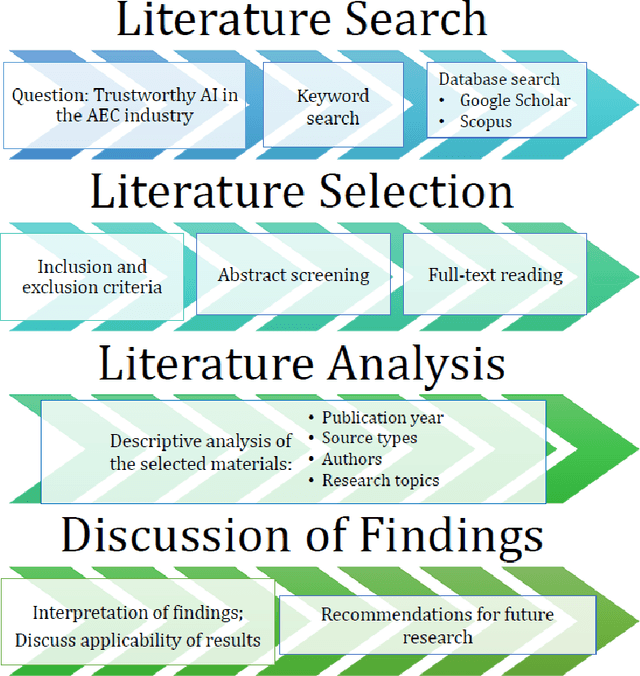Newsha Emaminejad
Assessing Trust in Construction AI-Powered Collaborative Robots using Structural Equation Modeling
Aug 28, 2023Abstract:This study aimed to investigate the key technical and psychological factors that impact the architecture, engineering, and construction (AEC) professionals' trust in collaborative robots (cobots) powered by artificial intelligence (AI). The study employed a nationwide survey of 600 AEC industry practitioners to gather in-depth responses and valuable insights into the future opportunities for promoting the adoption, cultivation, and training of a skilled workforce to leverage this technology effectively. A Structural Equation Modeling (SEM) analysis revealed that safety and reliability are significant factors for the adoption of AI-powered cobots in construction. Fear of being replaced resulting from the use of cobots can have a substantial effect on the mental health of the affected workers. A lower error rate in jobs involving cobots, safety measurements, and security of data collected by cobots from jobsites significantly impact reliability, while the transparency of cobots' inner workings can benefit accuracy, robustness, security, privacy, and communication, and results in higher levels of automation, all of which demonstrated as contributors to trust. The study's findings provide critical insights into the perceptions and experiences of AEC professionals towards adoption of cobots in construction and help project teams determine the adoption approach that aligns with the company's goals workers' welfare.
Trust in Construction AI-Powered Collaborative Robots: A Qualitative Empirical Analysis
Aug 28, 2023


Abstract:Construction technology researchers and forward-thinking companies are experimenting with collaborative robots (aka cobots), powered by artificial intelligence (AI), to explore various automation scenarios as part of the digital transformation of the industry. Intelligent cobots are expected to be the dominant type of robots in the future of work in construction. However, the black-box nature of AI-powered cobots and unknown technical and psychological aspects of introducing them to job sites are precursors to trust challenges. By analyzing the results of semi-structured interviews with construction practitioners using grounded theory, this paper investigates the characteristics of trustworthy AI-powered cobots in construction. The study found that while the key trust factors identified in a systematic literature review -- conducted previously by the authors -- resonated with the field experts and end users, other factors such as financial considerations and the uncertainty associated with change were also significant barriers against trusting AI-powered cobots in construction.
Trust in AI and Implications for the AEC Research: A Literature Analysis
Mar 08, 2022



Abstract:Engendering trust in technically acceptable and psychologically embraceable systems requires domain-specific research to capture unique characteristics of the field of application. The architecture, engineering, and construction (AEC) research community has been recently harnessing advanced solutions offered by artificial intelligence (AI) to improve project workflows. Despite the unique characteristics of work, workers, and workplaces in the AEC industry, the concept of trust in AI has received very little attention in the literature. This paper presents a comprehensive analysis of the academic literature in two main areas of trust in AI and AI in the AEC, to explore the interplay between AEC projects unique aspects and the sociotechnical concepts that lead to trust in AI. A total of 490 peer-reviewed scholarly articles are analyzed in this study. The main constituents of human trust in AI are identified from the literature and are characterized within the AEC project types, processes, and technologies.
Trustworthy AI and Robotics and the Implications for the AEC Industry: A Systematic Literature Review and Future Potentials
Sep 27, 2021



Abstract:Human-technology interaction deals with trust as an inevitable requirement for user acceptance. As the applications of artificial intelligence (AI) and robotics emerge and with their ever-growing socio-economic influence in various fields of research and practice, there is an imminent need to study trust in such systems. With the opaque work mechanism of AI-based systems and the prospect of intelligent robots as workers' companions, context-specific interdisciplinary studies on trust are key in increasing their adoption. Through a thorough systematic literature review on (1) trust in AI and robotics (AIR) and (2) AIR applications in the architecture, engineering, and construction (AEC) industry, this study identifies common trust dimensions in the literature and uses them to organize the paper. Furthermore, the connections of the identified dimensions to the existing and potential AEC applications are determined and discussed. Finally, major future directions on trustworthy AI and robotics in AEC research and practice are outlined.
 Add to Chrome
Add to Chrome Add to Firefox
Add to Firefox Add to Edge
Add to Edge